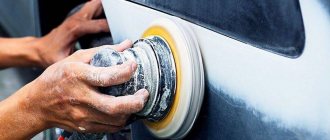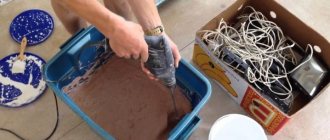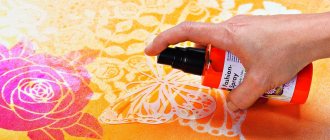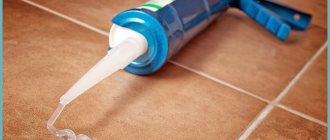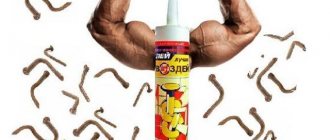Pros of finger paints
- Safety is the main benefit of finger painting. The natural composition of pigments and binders is the most important criterion for choosing materials for drawing, because small children love to taste everything.
- Harmonious development of the baby. Small children experience the world by touch. Finger painting perfectly develops fine motor skills, promotes the formation of a healthy nervous system, and helps the child constantly learn new and unknown things. Everything in the human brain is interconnected; by developing the motor center, you stimulate the speech center, because they are nearby. The speech center is responsible for the thought process and further along an endless chain.
- Finger paints are easily washed off with water and do not spread. They can be used to draw on different materials. Paper, cardboard, glass, plastic, fabric, even bathroom tiles will do. A young artist’s own body can become a canvas. The baby will be happy to try to draw something on his tummy.
- This simple method of drawing does not require additional materials , so finger paints are suitable for babies under one year old, and for older children this is an even more indispensable tool for developing creative abilities. Children are not yet physically able to pick up a brush, felt-tip pen or pencil, but drawing with their palms and fingers is a simple and fun activity.
- The finger drawing technique is simple , and every mother can teach it to her child, even one who cannot draw at all. All you need to do is show in which part of the drawing to leave a palm or fingerprint, and then help the young artist fill in the missing details to get the finished image.
Home Recipes
Prepare the paint base yourself
From yogurt
You will need:
- low-fat natural yogurt - 100 ml;
- gel food coloring - 1 sachet.
Mix yogurt with coloring. Place in the refrigerator overnight, allowing the mixture to thicken slightly.
From flour
Ingredients:
- wheat flour - 4 cups;
- table salt - 5 tbsp;
- sunflower oil - 4 tbsp;
- food coloring - 2 tsp;
- water - 150 ml.
Using a blender or mixer, mix flour, salt and butter, adding water until you get the consistency of semi-liquid sour cream. Add coloring, stirring until a uniform shade is obtained.
From corn starch
You will need:
- corn starch - ½ cup;
- cold water - 150 ml;
- boiling water - 1 l;
- food coloring - 1 sachet.
Dissolve the starch in cold water until the mixture is smooth. Gradually pour boiling water into the resulting paste, stirring constantly. Cool. Pour into prepared containers, adding dye. Place in the refrigerator for 30-40 minutes.
From shaving foam
You need to take:
- shaving foam - 300 g;
- gouache - 20 g.
Thoroughly beat the foam with gouache. Place in the refrigerator for 1 hour. Then you can use it.
From soap shavings
Take:
- toilet soap - 1 piece;
- boiling water - 2 cups;
- gouache - 20 g.
Grate the soap on a fine grater. Pour boiling water over it, whisk constantly with a mixer or whisk. At the end add gouache. Cool the mixture in the refrigerator.
At what age can you start painting with finger paints?
Many mothers buy finger paints for children under one year old. Of course, it is best to wait until the child begins to sit independently and confidently. This happens at 8-9 months. But, if you really want to, you can practice finger painting from 6-7 months.
At this age, the fingers “obey” their little owners very poorly and, of course, the baby will not yet be able to draw with a brush or felt-tip pen, but using finger paints, he will definitely make his parents happy with his first creative masterpieces.
How to choose paint for painting and how to work with it: tips
- Before purchasing, check the composition of the paint; it is advisable to ask for quality certificates, because... the paint must be safe for your baby. The composition should not contain any harmful substances; only food dyes should be used, because children often taste the paint
- Choose colors according to the child’s age, look at what is written on the packaging. Some manufacturers offer such paints from 1 year, some from 2 or 3 years
- You shouldn’t buy a kit with a bunch of different colors; at this age, a child needs to learn only the basic ones: red, blue, yellow and green. As a rule, paints are sold in jars of 4 or 6 colors, no more is needed
- It would be nice if you painted with the color you are currently learning. This will help your child learn colors easily through play.
- For drawing, choose whatman paper or a piece of wallpaper, because an A4 sheet is not enough for a small child, he still does not know how to see boundaries and not go beyond them, so he will decorate everything around you
- Take care of how you clean everything up later, because once the child gets the hang of it, he may forget about whatman paper and explore the territory beyond, draw on himself or you. It is best to cover everything with oilcloth and dress in old clothes
What are the benefits of finger painting?
You shouldn’t assume that finger painting for kids is a useless activity, thinking that the child doesn’t understand anything yet. A small child draws not for the sake of the result, but for the sake of the process. He does not yet put his feelings into thoughts and words, and especially does not understand what exactly he is doing and why.
The baby enjoys new sensations: tactile, visual and even taste. This is how new neural connections are created in his head, and the more there are, the faster he develops.
Adults expect results from children's drawings too early. It is important for mom and dad that the object depicted by the child is recognizable, but a beautiful picture does not indicate creative abilities. Creativity is a process. Your baby's blots reflect the world as he feels it.
Finger painting is pure self-expression that is possible at any age.
Vivid childhood experiences affect the child’s psychological health. When a child is busy doing something pleasant with an important adult, it creates a positive outlook on the world and reduces the risk of developing psychological disorders in the future.
Drawing lessons should not be long and tedious for your child. A few minutes is enough. During the drawing process, be sure to praise the child and tell him about this or that color (what it is, what color it comes in).
What is the use of such paints?
If your child does not yet know how to hold a brush correctly, but is actively learning to draw, then this set for early creativity is the best choice for mother and baby!
Hand drawing is useful in all respects because it:
- develops imagination;
- forms the correct perception of color;
- instills artistic taste;
- helps children realize their fantasies.
With finger paints, children will be happy to draw funny, cute cards for their moms and dads and just allow themselves to have a little fun.
Where to buy children's paints for hand painting
You can purchase finger painting paints at most craft stores. Please note that these should be special paints for children over 1 year old if you are planning creative activities with very young artists. As a rule, manufacturers offer paints for children aged 3 years and older.
An excellent choice would be children's finger paints from JOVI or Kalyaka-Malyaka, which have a safe composition. They are easy to wash off clothes and can be easily washed off from different surfaces. They do not have an unpleasant odor. And at the same time they allow you to create bright and colorful finger drawings. They will delight you and your child, giving a lot of joy and positive moments.
Comparison of paints
The table below shows the main characteristics of paints. Compare them with each other and choose the most suitable entertainment option for your baby.
| Name of paints | A country | Number of colors | Volume, ml |
| Junland Fox 6 colors | Russia | 6 | 360 |
| LORI 3 colors | Russia | 3 | 210 |
| CENTRUM My Little Pony 4 colors | Russia | 4 | 160 |
| Danko Toys My first creation 4 colors | Ukraine | 4 | 100 |
| MultiArt Numbers 5 colors | China | 5 | 100 |
| ErichKrause ArtBerry gel finger paints with Aloe Vera 6 colors | Russia | 6 | 210 |
| Kalyaka-Malyaka 4 colors | Russia | 4 | 440 |
DIY finger paints for kids
Of course, today you can buy finger paints at any children's goods store. But, unfortunately, store-bought finger paints cannot be eaten. However, we can offer you a delicious recipe. You can try to make them yourself from simple products available in every home. Here's not just one recipe for finger paints for kids, but two + videos.
How to make finger paints at homeRecipe No. 1 Thoroughly mix flour (0.5 kg), salt (3 tablespoons), water and vegetable oil in a blender or mixer. The result should be a mass reminiscent of sour cream. Adjust thickness and liquidity by adding a small amount of flour or water accordingly. Pour the resulting mass into small jars and add vegetable dye: carrot juice, red beet juice, etc. You can also use food coloring and Easter egg paint. Recipe No. 2 Take some fine-grained porridge (preferably instant porridge), pour beetroot or carrot juice into it. And that's it, the paints are ready. |
DIY finger paints in 5 minutes!
Advantages of choice
The choice of finger paints for babies is determined by the variety of color palettes and the presence of sponges, stencils, seals, templates, etc. Finger paints are best used at 1 year of age, because younger children are unlikely to be able to understand what is required of them. At 6 months, only the most desperate mothers give such a toy to their children. Children from 1.5 years old are already able to figure out how to use a new toy. They are happy to discover a new world of bright colors and unusual sensations.
A recipe for finger paints, the composition of which must necessarily contain water and food colorings approved for use in the Russian Federation and the EU. Good children's paints should not contain alcohol! Finger paints for 2-3 year old children differ from gouache in that they are easily washed off from clothes, tiles, bathtubs, and floors. The composition is unsuitable for food, so it has an unpleasant or even bitter taste. Having tried it, the curious researcher immediately loses the desire to repeat this unpleasant experience.
Gouache sometimes has a sweetish taste, which is why the baby may decide that it is edible. That is why it is not recommended to give gouache to younger children.
On video: children's creativity using finger paints.
Finger painting - first acquaintance
Preparation for the process
- Select a surface to draw on. The bigger, the better. A sheet of Whatman paper works well, ideally if you have a piece of old wallpaper. The prints will be more interesting thanks to its texture, and the lessons will be more fruitful. You can draw in the bathroom. Another interesting option is an oilcloth tablecloth.
- Dress your child in things that you don’t mind ruining. The paint will be everywhere. You can wash it, but do you really want to spend extra effort on removing stains? It is better to select a set of clothes specifically for drawing classes.
- Place yourself away from soft sofas, armchairs and other pieces of furniture and decor that are difficult to wash.
How to paint with finger paints
The ability to draw with your hands without special tools provides ample scope for creativity. Imprints are made from the child's fingers, palms, and legs. For children under 3 years old, drawing will be spontaneous. Let your baby create without thinking about the shape and name. Show your child how he can leave fingerprints on a piece of paper, how he can draw lines or mix colors. Start learning with one can of paint, gradually increasing the number of colors to paint.
Gradually make the task more difficult, for example, paint your palm and place it against a sheet of paper. Show your child what imprint will be left from an open palm and from a palm with clenched fingers.
If your child remains indifferent to the process, do not be upset. This means that he is not ready yet. You can help him, show him, but don't insist.
You can also use stencils and stamps for drawing. Typically, stamps are sold in one set with finger paints. You can complete the creative set yourself: cut out the stencil from cardboard and cut off a small piece of sponge. Place the stencil on a piece of paper and give your child a sponge after dipping it in the paint.
You can also cut out shaped stamps from a sponge. Typically, painting with a sponge brings children complete delight.
Different prints are obtained from crumpled paper, fabric, or a plastic bag. Playing with texture will make drawing even more fun.
Templates for finger drawing on a sheet of paper will help you navigate.
Another option is special pictures for finger paints.
Thinking about how to teach a child to paint real objects with finger paints on their own: flowers, the sun, a house, animals, mom, dad, should not be earlier than 3 years. Don't get attached to templates. In the imagination of children, a flower may look completely different than in the imagination of adults.
Your task is to teach how to observe the real world, but not to alter your inner vision.
Developing fine motor skills in a child
Psychologists believe that creative experiments with finger paints can begin at 10–11 months. Even then, the baby can trace the relationship between the paint and the mark on the paper. But it’s better to focus on your child’s individuality. If he can already move freely, crawling or on his feet, and is fully engaged in research activities, it’s time to introduce him to creativity and introduce him to finger paints.
It is advisable to start finger painting in the first half of the day, when the child is more active. The baby will remind you about the end of the lesson, because it is simply impossible for a one-year-old baby to hold attention for a long time. The first lessons, as a rule, do not last long - literally a couple of minutes. In the future, an enthusiastic child can draw for up to 15–20 minutes without stopping.
What do you need for finger painting? First of all, special finger paints, they can be bought in almost any store that has a department of goods for children's creativity. They have the desired consistency and do not require additional dilution with water. When choosing, pay attention to the jars themselves: they must close tightly so that the paint does not thicken too quickly. For your first experiments in fine art, it is better to choose bright, but not “acidic” colors. As for paper, A3 size watercolor sheets are preferred. They are big, the baby will have room to “swing”. And if you take a roll of old wallpaper on which you can draw on the reverse side, then there will be no limit to a child’s happiness. And also make a blank - a green leaf on which the ladybug sits. You will need it.
Step 1.
Taking into account the child’s age, we prepare a workplace: cover the table or floor with oilcloth (newspapers), put a sheet of paper and paint, open a couple of jars. It is better to start getting acquainted with finger paints with one or two colors. At first, the baby is surprised by the very fact that the paint leaves a mark on the paper, and does not try to change colors.
Step 2.
Take your time to dip your baby’s finger in the paint. He may get scared and flatly refuse to “get his hands dirty.” Better show him an example by leaving a long colored line on the paper with your finger or a print of your palm. Then invite your baby to “play around” with you. Celebrate the activity with rhymes or songs.
Step 3.
Now let the baby dip his finger in the paint and run it across the paper. Give your child time to get comfortable and understand that the line on the sheet is the work of his fingers. And then move on to simple game exercises.
Step 4.
Now we take our blank - a green leaf with a ladybug. Invite your child to finish painting her paws and dots on her back using a finger and black paint. Children love it when there is a playful moment in the lesson. This really captivates them. And if they like it, the next “lesson” will be a great success!
Vigilance first!
Before purchasing, check whether the finger paint you choose meets safety standards. Russian manufacturers must indicate the number of the sanitary-epidemiological report. On the packaging of imported paint, pay attention to the presence of the “CE” or “AP” marks. This marking means that the product meets the requirements of European or American standards and is safe for the health of its consumers.
Drawing with finger paints consciously
If your baby already knows well how to use finger paints, that is, he understands that in order to get a certain image, you need to dip your fingers in a jar of paint and then run them over a sheet of paper, it’s time to teach him to create meaningful drawings with his hands, using basic finger drawing techniques.
Finger painting
So – what to paint with finger paints? The first finger drawings can be quite simple: ask the baby to leave fingerprints in a chaotic order. When the paint is dry, use your imagination and have a fun activity with your child, turning the blots into finished images.
This can be done by drawing in the missing details with a pencil or felt-tip pen. When the baby gets older, he himself will be able to turn ordinary dots and circles into balloons, flowers, animals or people.
Drawing with palms
Since it is difficult to restrain a child from the desire to apply paint to the entire surface of the palm, and not just to the fingertips, palm painting can be mastered in parallel with the finger painting technique.
Drawings with palms are usually larger, brighter and more colorful. You can finish drawing them not only with pencils and felt-tip pens, but also with the same finger paints.
Making drawings from palms
Leaving several handprints so that you get the intended complete composition is quite a difficult task.
So, it is obvious that the best way to start a child’s creative development is by offering him finger paints. They are non-toxic and completely harmless to the health of the child, even if he tastes them.
Finger paints for kids are water-based and have a jelly-like consistency, so they don’t drip or spread if the jar accidentally turns over. They also dry slowly and are easily washed off your hands. You can remove paint that gets on clothes with any detergent.
Finger paints are an excellent means of developing a young child. They contribute to the development of not only the creative, but also the intellectual abilities of the child.
Finger painting helps develop the baby's fine motor skills, and it activates the activity of the area of the brain adjacent to the speech area of the brain. Thus, with the development of fine motor skills of the hands, the child’s speech abilities also develop. In addition, tactile sensitivity (sensations from contact with objects and materials) also develops.
What are finger paints, their advantages and disadvantages
The name “finger paints” speaks for itself. Painting with fingers and palms is very convenient for the youngest children who do not yet know what a brush is.
The basis of finger paints is water and a jelly base component (agar, gelatin, etc.). Thanks to this, the paints are safe for the little artist and easy to use: they do not leak or crack during prolonged contact with air when open. Food coloring is added to finger paints as coloring components, because... they are considered the safest for babies.
The advantages of paints include the following:
- The jelly base allows the colors to blend well. The paints do not flow out of the tube, even if they are turned over.
- High-quality paints are quickly and without a trace washed off from the skin with soap and from clothes when washing.
- Finger painting helps in the development of tactile sensations and, as a result, the nervous system.
- The perception of color is formed.
- Exercises calm you down and improve your mood.
Some manufacturers' assortments include paints labeled "sensory". They contain particles of sand or other crushed elements and enhance the baby’s tactile sensations when drawing, which has a beneficial effect on development. There are also interesting sets of finger paints with stamps and stencils on sale, for example from Molly, Colorino and Play-Doh, etc.
Finger paints with stamps
If you try, you can find certain disadvantages, or more precisely, inconveniences when using finger paints:
- As a rule, they take a long time to dry, because... The jelly-like component in the composition slowly releases water to the air. In this regard, if you want to preserve a child’s drawing, then you should dry it in a warm place or with a hairdryer. As a last resort, put it somewhere where it can easily dry on its own.
- During classes, children love to draw not only on paper, but also on everything around them. Most paints wash off easily, but certain pigments, such as cherry or blue, may still stain for a while. Therefore, it is better to put clothes on the child that “can” get dirty, and lay more newspapers or paper around to additionally protect the surface.
Safe paint for children's rooms
Children are growing rapidly. Just yesterday the baby could only sleep, eat and scream, but now he learns about the world himself, shows character, grows up, then goes to school and continues to grow. A child’s room is a place where he will want to return, his own corner in a huge world. Therefore, it must meet his needs and help his development.
Completely updating the interior and purchasing new furniture every season is very expensive and not very reasonable. It is much more profitable and convenient to change the appearance of an already lived-in space: from ordinary rearrangement of furniture, to decor and complete repainting. Renovating a nursery together with an older child is a sure way to have fun and interesting time with the whole family.
In this article we will tell you how to choose suitable materials, what and how best to paint and where to buy paint for children's furniture made of wood.
Correct composition
High-quality finger paints for young children are made using only food-grade coloring ingredients and are therefore safe. They often contain large amounts of table salt. This is necessary so that the little creator does not like the taste of the product, and he no longer takes it into his mouth.
The product is based on water, the product is made in the form of jelly, which is quite convenient. It will not leak out of the can very quickly, even if you knock it over.
Typically, finger paints have the following composition: water, flour or starch, vegetable oil, food-grade dye, and salt. In addition to or instead of salt, bitter and sour components can also be added. They are designed to discourage the child from eating the product.
Please note that paints for little ones may differ significantly in composition from products for children aged 3 or 5 years.
For example, finger paints for children from one year old (and even more so up to one year old) are the safest, but they are also the most expensive. Therefore, if you want to choose a 100% safe product, carefully read what is written on the package. If the manufacturer does not indicate a list of ingredients, then it is better to refuse such a purchase.


